|
The Former Midland
Bank Building - King Street
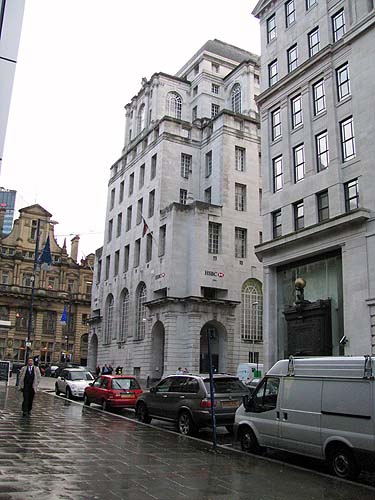 The top end of King
Street is dominated by this monumental Portland stone
buildings. It occupies an island site between Brown
Street and Spring Gardens. This was once the
Midland Bank. Below you can see two stone
carvings on the building. One includes the
initials of Midland Bank and the other contains a bee
hive logo of the bank.
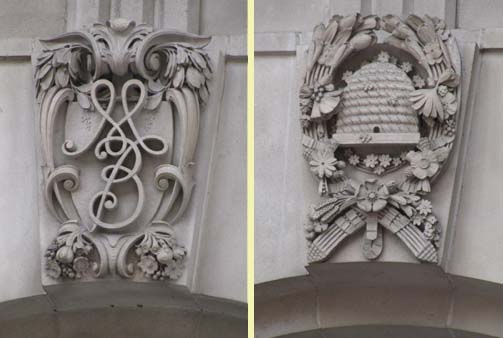 The building was
designed by Sir Edwin Lutyens in collaboration
with Whinney, Son & Austen Hall. The design
was completed in 1928 and building was finished in
1935. Lutyens is known as the designer of
the Cenotaph in Whitehall, London and for his
collaborations with the gardener Gertrude Jekyll.
In recent years it
has been home to HSBC but when the image below was
taken, in August of 2009, it was empty and "TO
LET".
 The building has two
angle porches in King Street. Pevsner describes it as,
"a
nearly square block and treated as such, with the
upper motifs identical on all four sides."......"The
banking hall could not be sky lit, so Lutyens gave
it archading on all four sides and wooden galleries
much as in Wren churches."
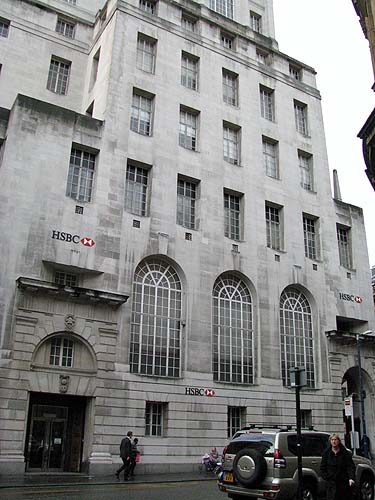 The images below,
taken on October 26, 2010, show the Midland Bank
swathed in scaffolding. I believe that this
is the beginning of the process of converting the
building into apartments and a restaurant.
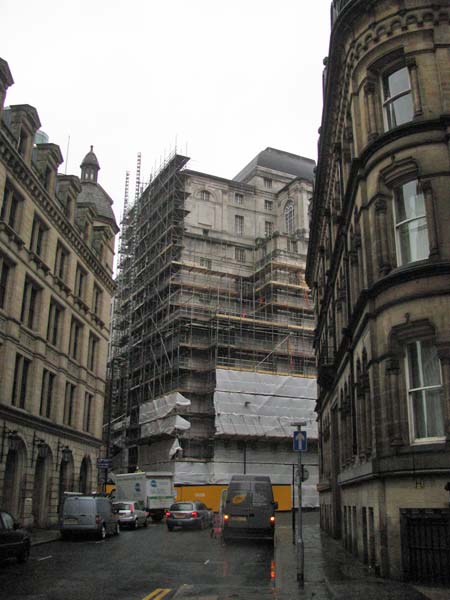  When I visited
the site in October of 2011 the building was
uncovered again and sparkling white.
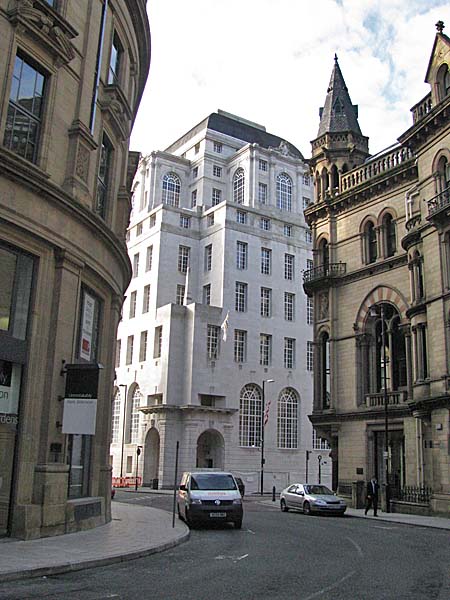 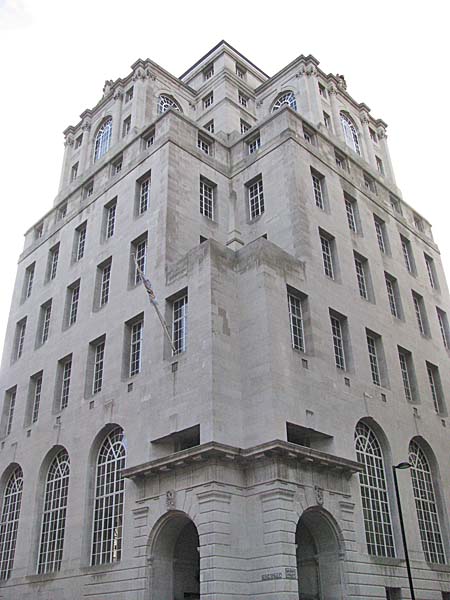 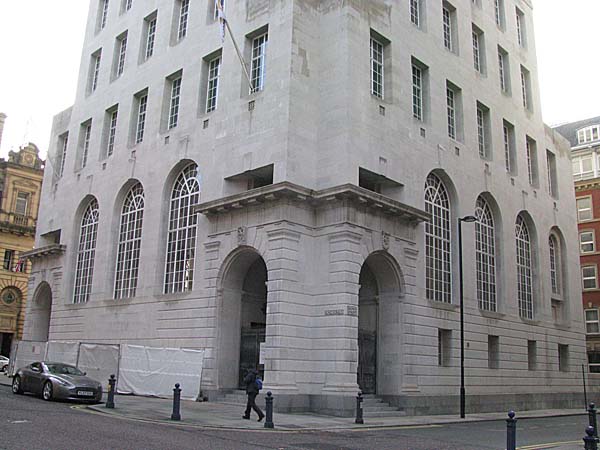 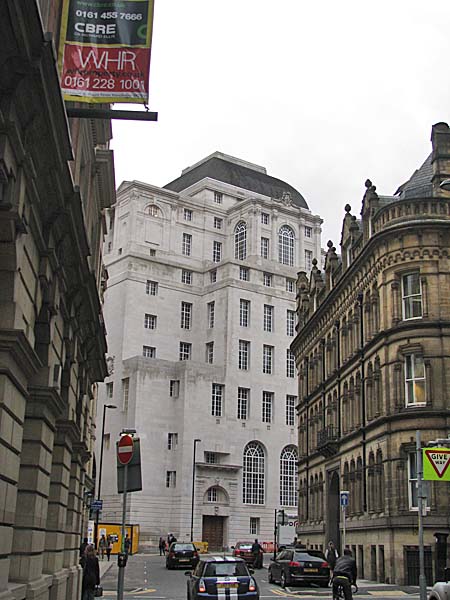 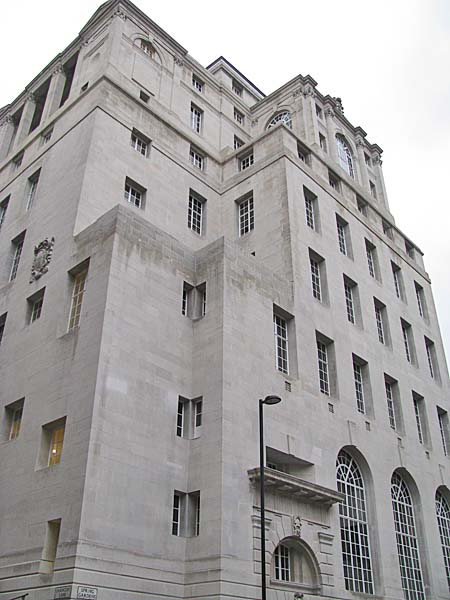  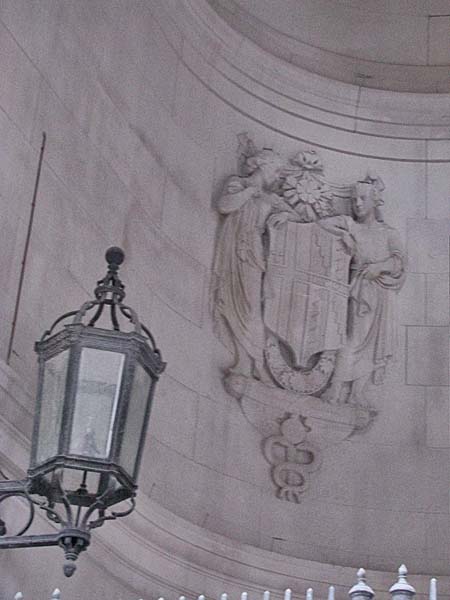 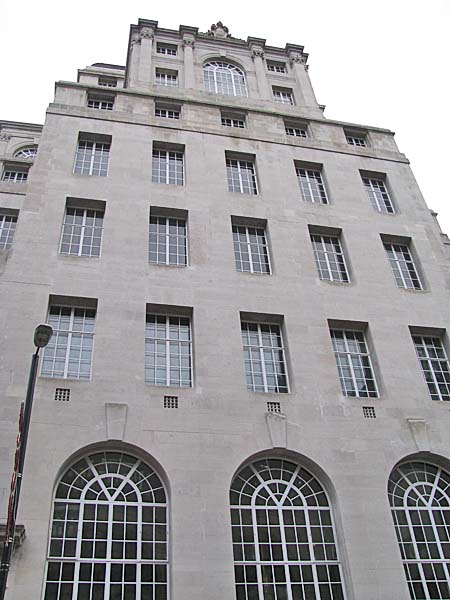 This notice was attached to the building: 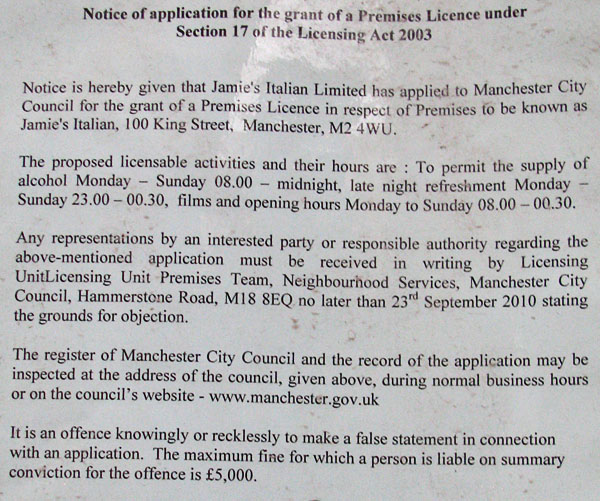 When I returned
in April of 2012, Jamie's was open for business.
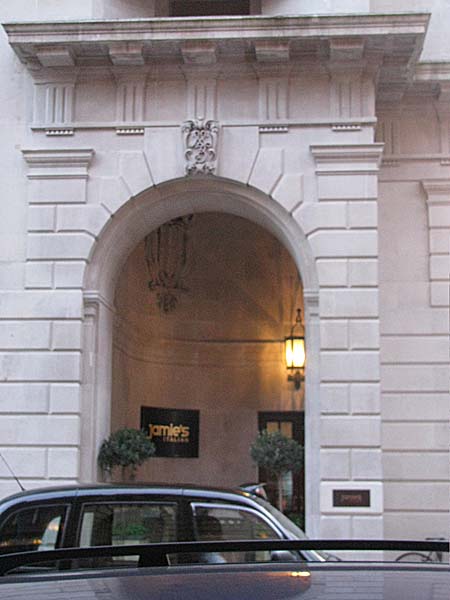 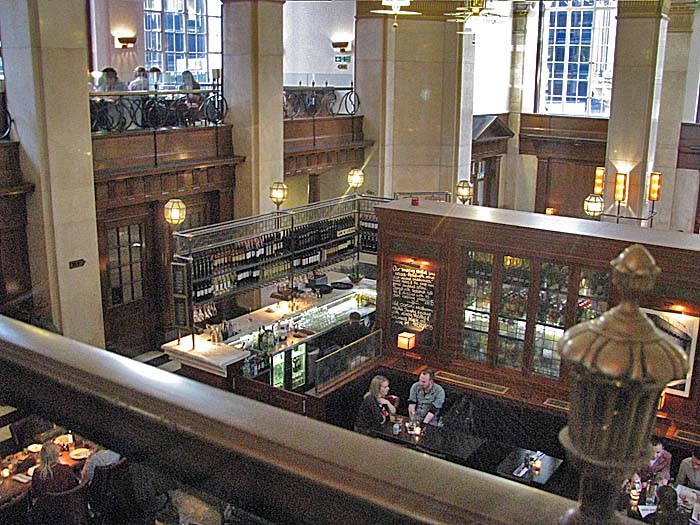 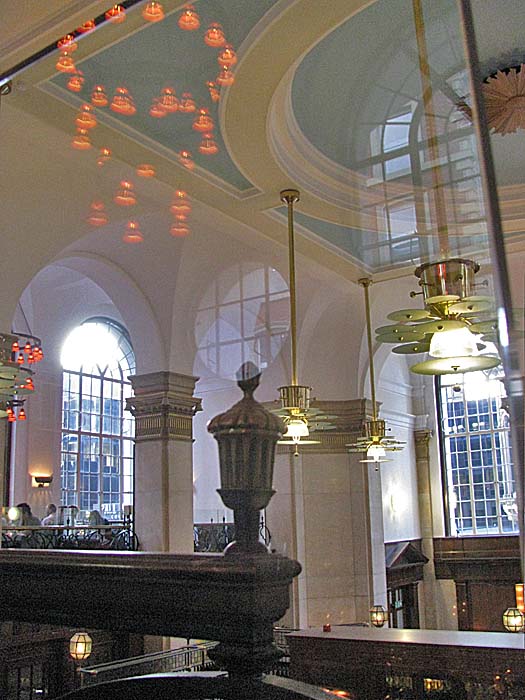 ********************* While Jamie's thrived
downstairs in the Banking Hall, upstairs the
rest of the building remained empty until work
began to turn it into a hotel. Accessed
by way of a door on Spring Gardens, the upper
floors are now home to the Hotel Gotham. (the
images below were taken in November 2015)
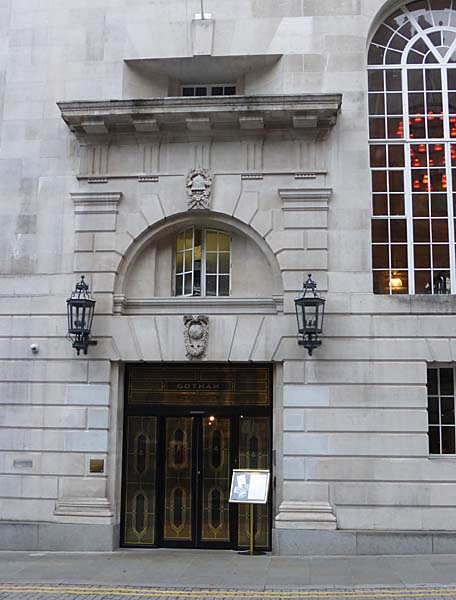 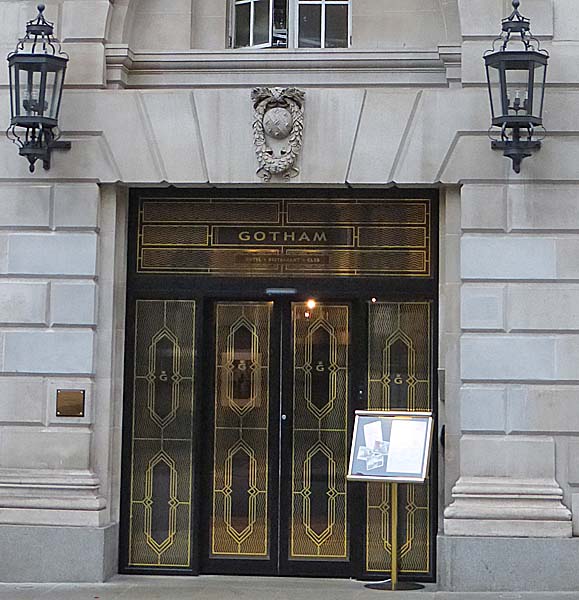 It describes itself as, "... an imaginative bolthole having style and substance, .... (with) a cheeky twist." They add that they have, "... painstakingly restored an iconic building and brought playful references to the banking past. In the bedrooms with moneybag-style laundry bags, in the restaurant with typewriters on the wall, and in the bar with upside down briefcases for light fittings. It could be the sumptuous fabrics, geometric carpets or theatrical monochrome palette, mixing blacks with gold and greys that create a glitzy, plush, unapologetic Gotham." 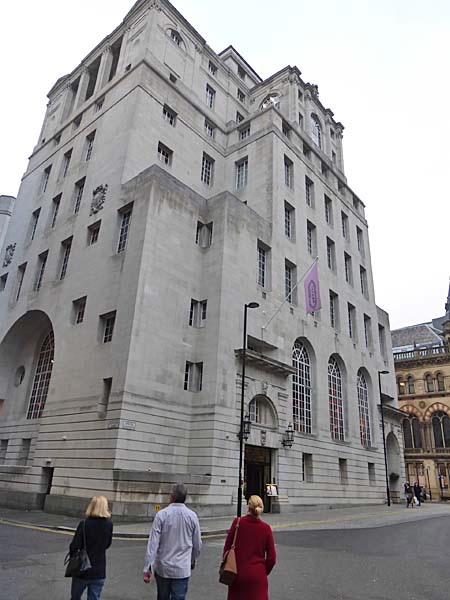 |